A pilgrimage to the garden at Villa Lante, an incomparable flower of the Italian Renaissance
After 40 years, George Plumptre finally realises his dream and sees for himself Vignola’s masterpiece: the garden at Villa Lante.
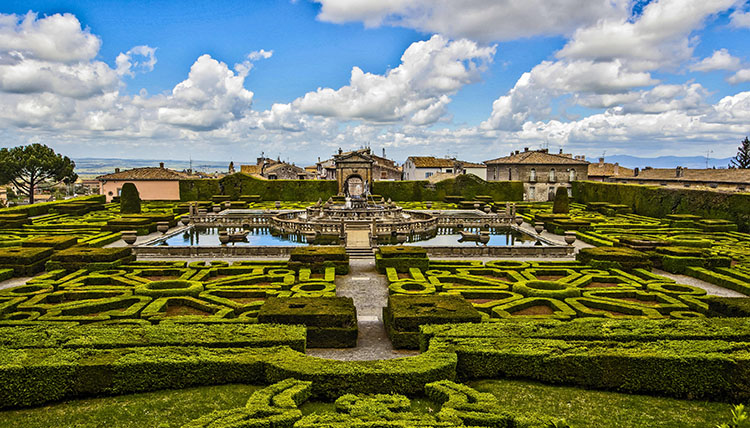

When on holiday in Italy recently we visited the Villa Lante garden in Bagnaia, near Viterbo. For me, this was a pilgrimage; no, stronger than that, it was the consummation of a love affair I had been conducting from a distance for nearly 40 years.
| Join George Plumptre on a tour of the finest gardens in Rome and LazioGeorge Plumptre is leading a visit to a number of Italy's most beautiful gardens, including Villa Lampre. The tour is jointly organised by Country Life and Boxwood Tours and scheduled for 5-9 May 2019, to coincide with the magical weeks of early Italian summer when roses bloom and nightingales sing day and night.For more information and to secure a spot, click here. |
I first read about the Villa Lante in the late 1970s, in one of two books on Italian Renaissance gardens. The first, by Georgina Masson, is large and comprehensive; the second, by Sir George Sitwell, is slim and selective. Both are seminal works, notable for their affection for their subject, which shines out from every page.
A few years later, I studied the Villa Lante closely for various books I was writing.
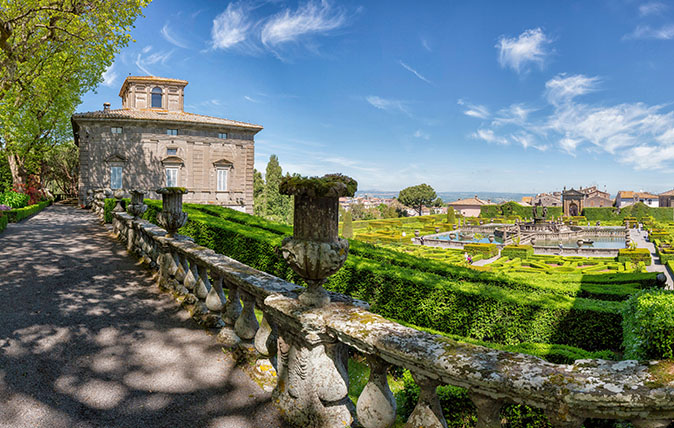
I discovered that its creator, Jacopo Vignola, was a brilliant, but shadowy figure, like so many craftsmen of the Italian Renaissance, and I found out about the intricate combination of design, architecture and engineering Vignola executed for his client, the rich Cardinal Gambara, beginning in 1566.
At the same time, I unearthed hints of why the garden has achieved its particular reputation. This rests not only on its tangible qualities, but on the sense that it is a place with soul, with a character that’s matured quietly through nearly 500 years.
That maturity has come with an ageing process from which the trappings of modernity are kept mercifully at bay. As you turn up a narrow side street in the small town of Bagnaia, which leads uphill to a small parking area, you have no idea that you are approaching one of the 10 or so most revered gardens in the world, a creation that is as much an iconic masterpiece of the Renaissance as Brunelleschi’s dome of the Florence Duomo or Michelangelo’s Sistine Chapel ceiling.
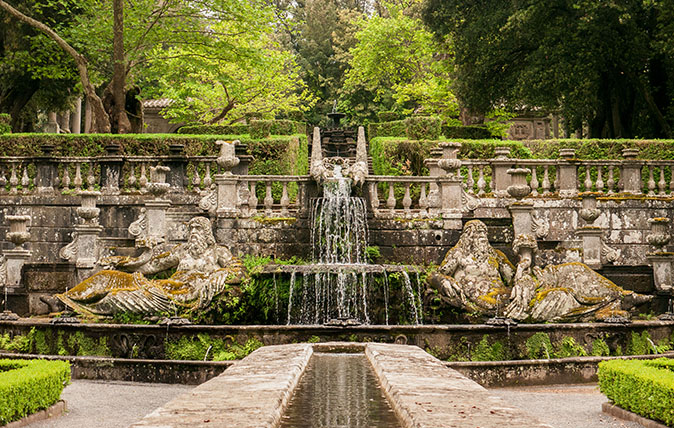
There are almost no signs. You approach through a gateway to a small courtyard with, to one side, a booth in which a polite, elderly man dispenses tickets. Next door, a small room, with a sign over the door proudly pronouncing ‘Bar. Ristorante’, contains two drinks-dispensing machines. But then, beyond, the great semi-circular Fontana del Pegaso, with monumental figures and splashing jets, gives a taste of what lies ahead.
Sign up for the Country Life Newsletter
Exquisite houses, the beauty of Nature, and how to get the most from your life, straight to your inbox.
Vignola used a sloping site on the edge of the rolling Cimini hills to create a garden that descends through a series of brilliantly arranged terraces and ornamental features. One unique feature of the Villa Lante, which adds inestimably to its charm, is the fact that the garden is not the adjunct to a villa or palazzo.
'Vignola made natural springwater the continuous, animated link from top to bottom'
Instead, two elegant matching casini are an integral part of the design, positioned on either side of the central vista, overlooking the Quadrato, the broad square parterre with its central Fontana dei Mori that fills the lowest level.
Flowering plants would provide the links through an English garden, but at Villa Lante, Vignola made natural springwater the continuous, animated link from top to bottom. Fed from hillside springs above, it flows without a break and with irrepressible virtuosity from top to bottom, through successive fountains, cascades and rills.
Today, the water is as cold and crystal clear as it would have been nearly five centuries ago, when the hydraulic skills of Vignola’s companion, Tomasso Ghinucci, first brought it coursing through the garden.
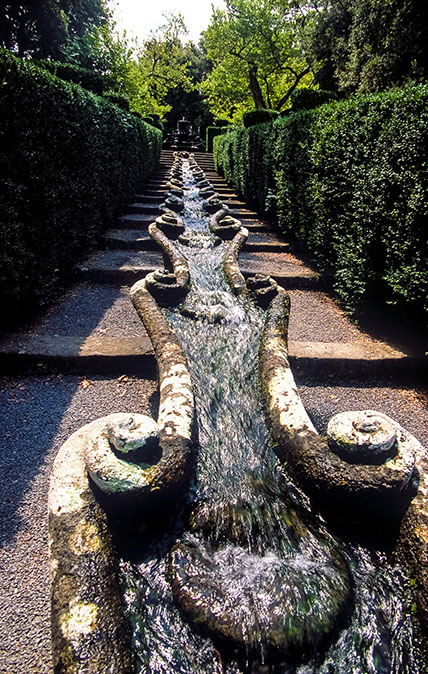
Although the architectural features of the Villa Lante are peerless, Vignola also appreciated the importance of light and shade and how these play with movement over the details of stonework and water. He knew that his client, Gambara, was a particular lover of Nature, and so the garden’s parkland setting and the trees within were of particular significance. Venerable evergreen holm oaks (Quercus ilex, a Mediterranean native), cast pools of shade with their great cooling canopies and their presence is integral to the garden’s restfulness.
'For the Villa Lante, the future is not so secure'
Restful and, at the same time, romantically melancholic: you sense the relentless decay of age is, at times, only just kept at bay. When we visited, the central fountain flanked by monumental figures of river gods was undergoing restoration and was thus inaccessible and covered in scaffolding.
As I contemplated the challenge of fending off the constant natural ageing that a garden faces, I compared it to the situation of the other most exquisite Renaissance masterpiece we sought out, Perugino’s small painting L’Annunciazione, on display in Perugia’s National Gallery of Umbria. Secure in regulated conditions, this tiny gem will survive for centuries; for the Villa Lante, the future is not so secure.
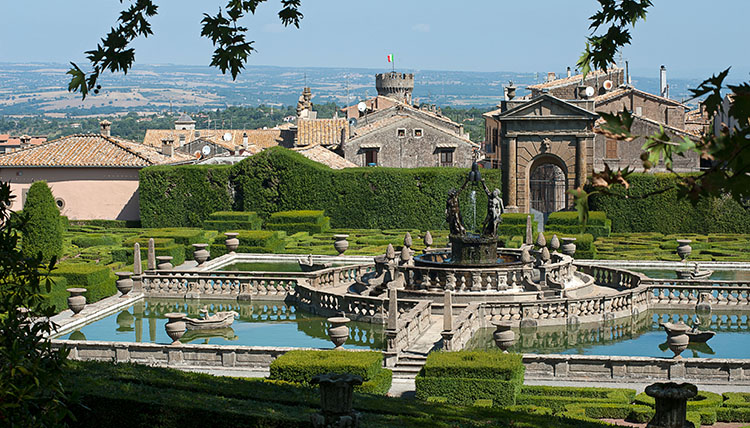
I was delighted to remind myself that my hero Sir Geoffrey Jellicoe, a Modernist with a deep admiration for the Classical tradition, made an erudite comparison between the work of Perugino and Vignola in his seminal book, The Landscape of Man: ‘The ideals of classical space composition were brought to a climax in painting by Perugino and Raphael, in landscape architecture by Vignola… The search was for the perfection in divine harmony between man and the universe, of which man assumed himself to be the centre.'
'The quality of craftsmanship, even at a distance of more than 500 years since its inception, is clear at every turn'
'Christ giving the keys to St Peter, painted by Perugino in 1503 for the Sistine Chapel, shows the same principles of composition as the Villa Lante at Bagnaia designed by Vignola in 1566… Both have evolved from an outer landscape, the one by suggestion from the sky, the other from the woods by water intricacies such as the fish rill… From order displayed to order concealed, the Villa Lante was an exercise in geometry – a house divided into two parts, each a square.’
Jellicoe alludes to the broader Renaissance context to which the Villa Lante makes such a profound contribution and confirms this is a garden that is far more than just a sum of its exquisitely arranged parts. The quality of craftsmanship, even at a distance of more than 500 years since its inception, is clear at every turn: boldly carved stonework; sculptures by distinguished artists; and the complex arrangement of successive fountains and water features.

Yet this is also the embodiment of Renaissance Humanism, of man’s relationship with the surrounding landscape and an illustration of his ability to enhance it.
Today, however, the light hand of human management contributes inestimably to the rewards of a visit. One knows that if the garden were in Britain, there would be endless trappings of tourism fame: a visitor centre, a coach park, a shop, a restaurant and hoards of people. Instead, here in the middle of Italy, you are able to sense the same undisturbed romanticism that has captivated visitors for half a millennium.
As Sitwell wrote in his little classic On The Making of Gardens, published in 1909: ‘Much there is of mystery in the garden, of subtle magic, of strange, elusive charm which must be felt but cannot wholly be understood.’ What a privilege to enjoy this spellbinding place in undisturbed tranquillity and to be able to share its incomparable, if slightly faded, beauty.
The garden of Villa Lante is open regularly through the year, with tickets costing €5 – see the Grandi Giardini website for more details. George Plumptre is chief executive of the National Gardens Scheme.
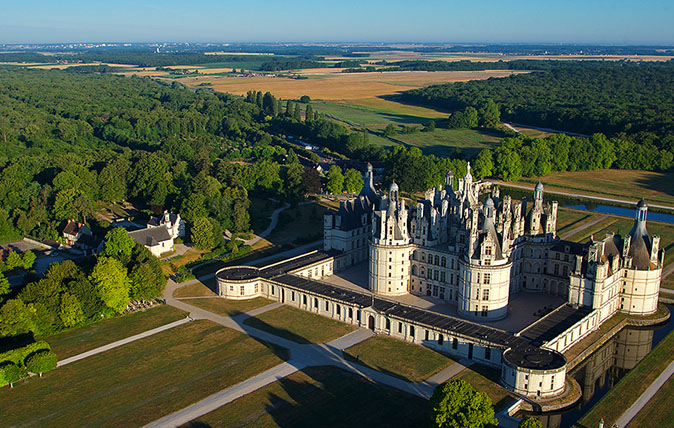
Credit: Relais de Chambord
Le Relais de Chambord: The hotel in the shadow of a masterpiece
A new hotel opens on the grounds of the Châteax de Chambord, allowing visitors to bask in the glory of
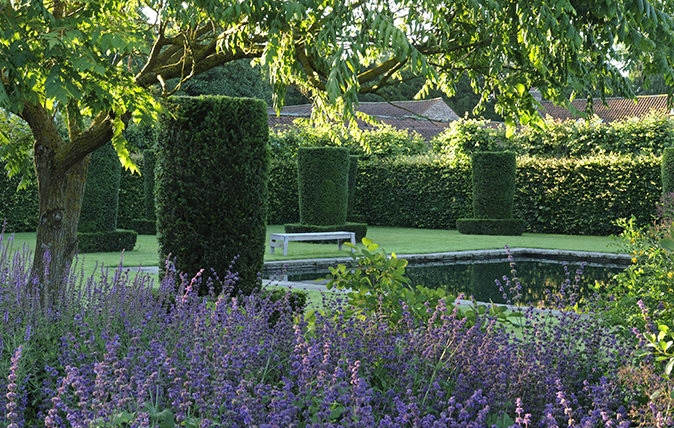
Scampston Hall: The early work of a master garden designer, still shining bright after two decades
Piet Oudolf was still up and coming when he was commissioned to create a garden at Scampston Hall in North
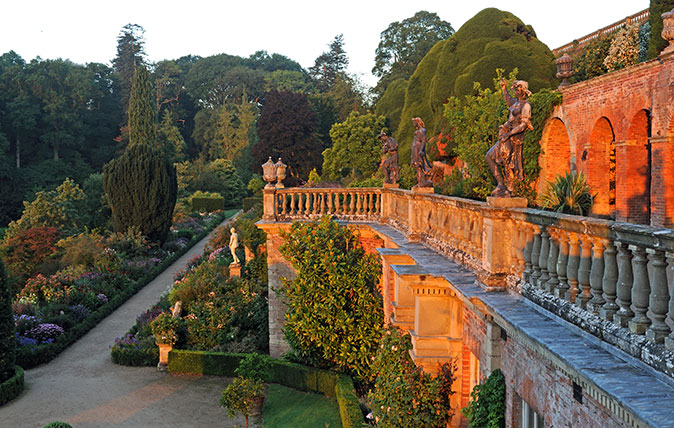
Powis Castle: An exemplary, inspirational and uplifting garden full fit for the 21st century
Non Morris visits Powis Castle in Welshpool, a plantsman’s paradise that reveals more and more as you traverse its many
Country Life is unlike any other magazine: the only glossy weekly on the newsstand and the only magazine that has been guest-edited by HRH The King not once, but twice. It is a celebration of modern rural life and all its diverse joys and pleasures — that was first published in Queen Victoria's Diamond Jubilee year. Our eclectic mixture of witty and informative content — from the most up-to-date property news and commentary and a coveted glimpse inside some of the UK's best houses and gardens, to gardening, the arts and interior design, written by experts in their field — still cannot be found in print or online, anywhere else.
-
 Some of the finest landscapes in the North of England with a 12-bedroom home attached
Some of the finest landscapes in the North of England with a 12-bedroom home attachedUpper House in Derbyshire shows why the Kinder landscape was worth fighting for.
By James Fisher
-
 The Great Gatsby, pugs and the Mitford sisters: Country Life Quiz of the Day, April 16, 2025
The Great Gatsby, pugs and the Mitford sisters: Country Life Quiz of the Day, April 16, 2025Wednesday's quiz tests your knowledge on literature, National Parks and weird body parts.
By Rosie Paterson